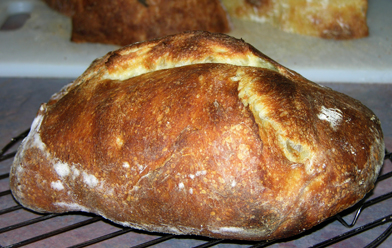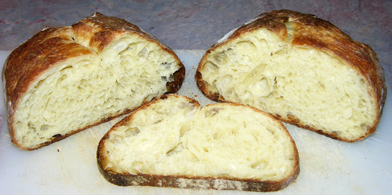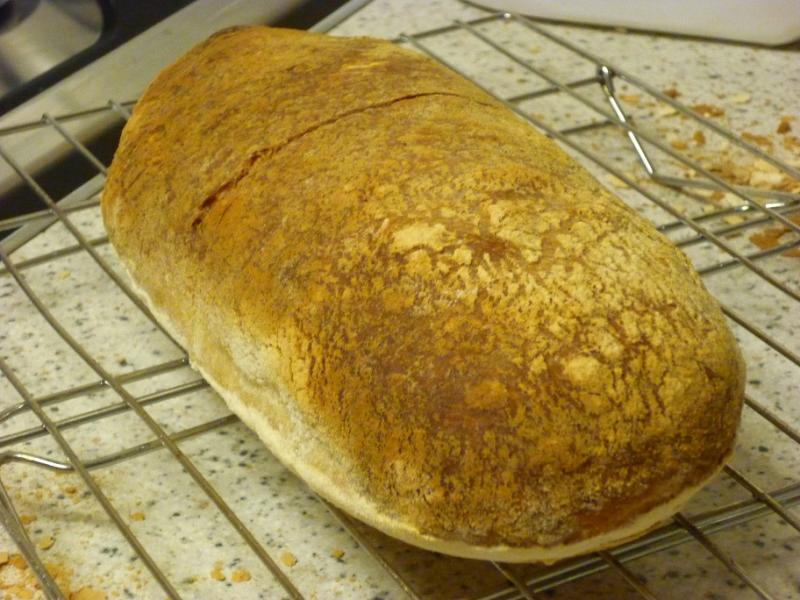It is really odd and slightly annoying that the spell checker wants to replace kamut with kaput. Is this a pre-judgment before the start? But, after seeing the results that Michael Wilson achieved with his similar White Spelt Bread here
http://www.thefreshloaf.com/node/29146/100-white-spelt-100-hydration
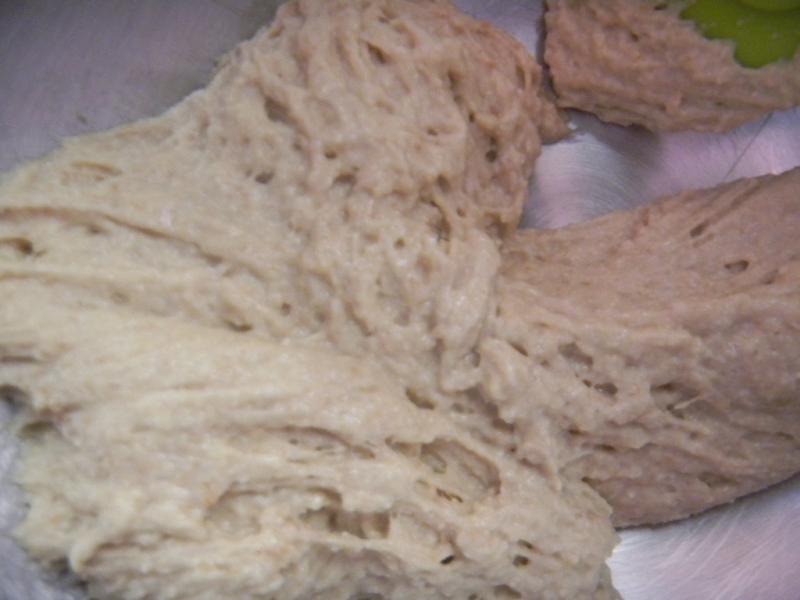
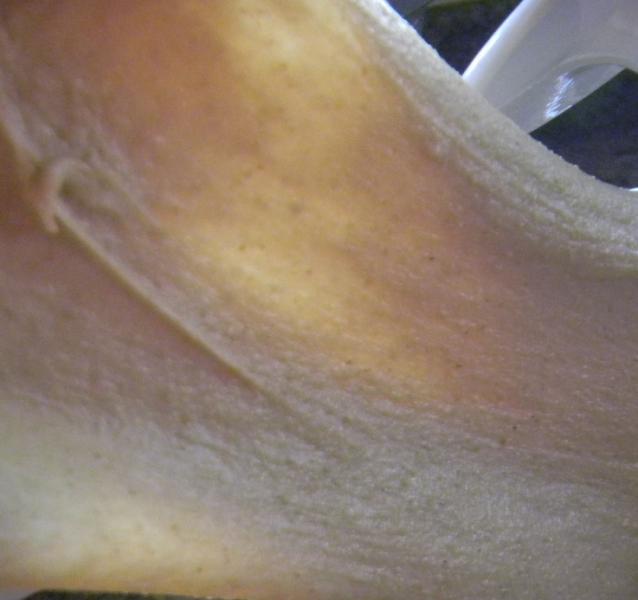
We decided that spell checkers are way more stupid than my apprentice who is one sharp cookie for a ‘Dumb Doxie’ with a large nose for fine baking .......and a tummy to prove it.
We also looked at Shaio-Ping’s 100% Spelt and txfarmer’s more recent one too to see what we could glean from them here:
http://www.thefreshloaf.com/node/13934/100-spelt-levain-bread and here:
http://www.thefreshloaf.com/node/28388/100-spelt-sourdough-trying-spelt-first-time
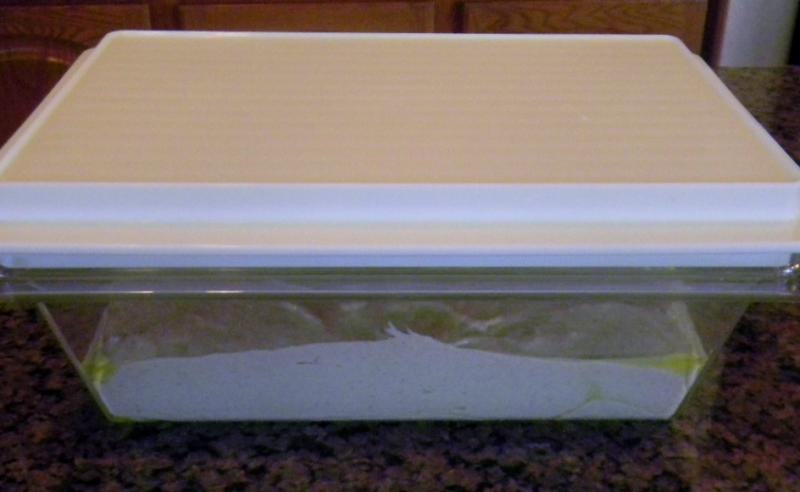
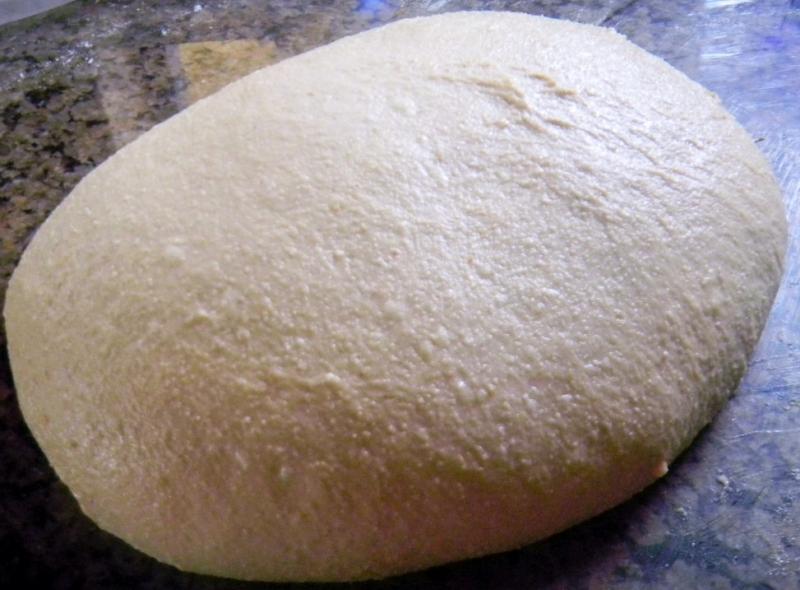
We were going to take up Michael’s challenge but white spelt is no where to be found. When we tried to get a half pound of kamut berries out of the Whole Foods bin, we dropped 3 pounds in the bag in a flash by mistake. Since there is no way to put it back, we immediately decided to do a 100% kamut with 100% hydration bread instead but those weren’t the only changes we had in store since then we had no idea what they might end up being after my apprentice got her paws in the mix.
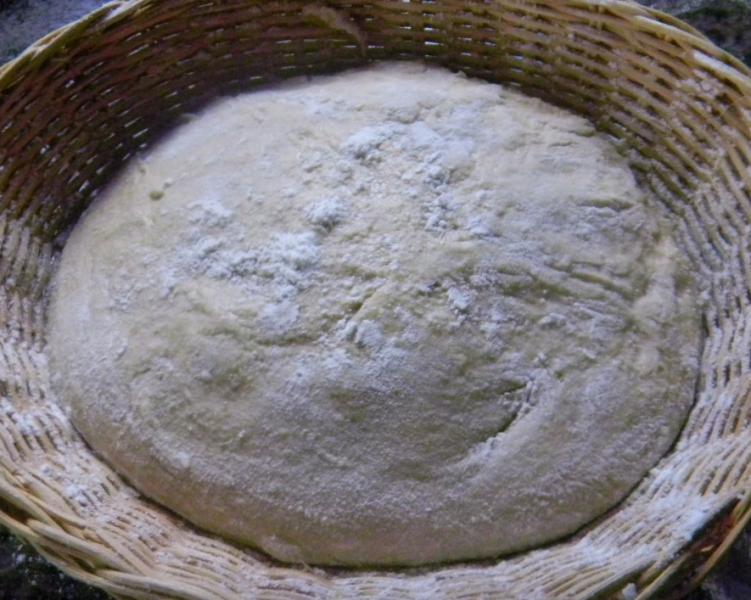
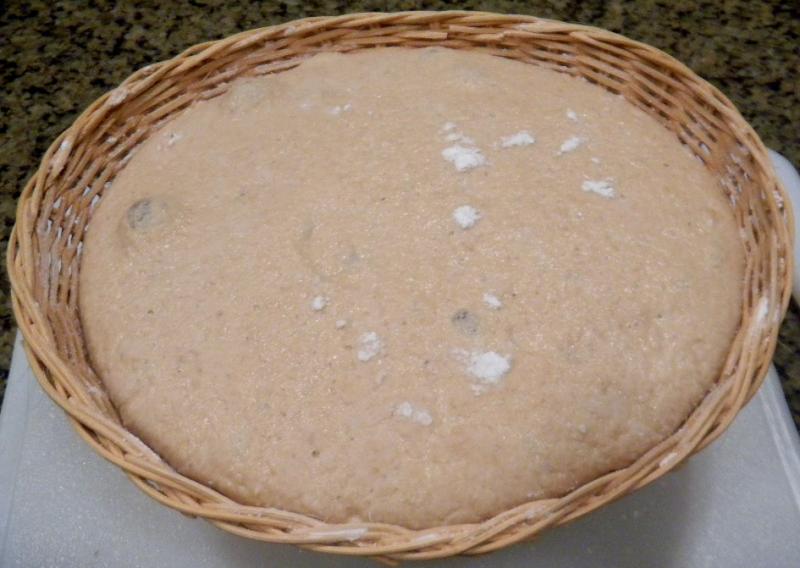
We didn’t read Mini Oven’s many kamut experiments from 2008 – 2009 that explain anything one would need to make a 100% kamut bread or one with soakers, scalds, sprouts …etc ! We would have made a different bread had we known what we learned from her and others old posts on kamut.
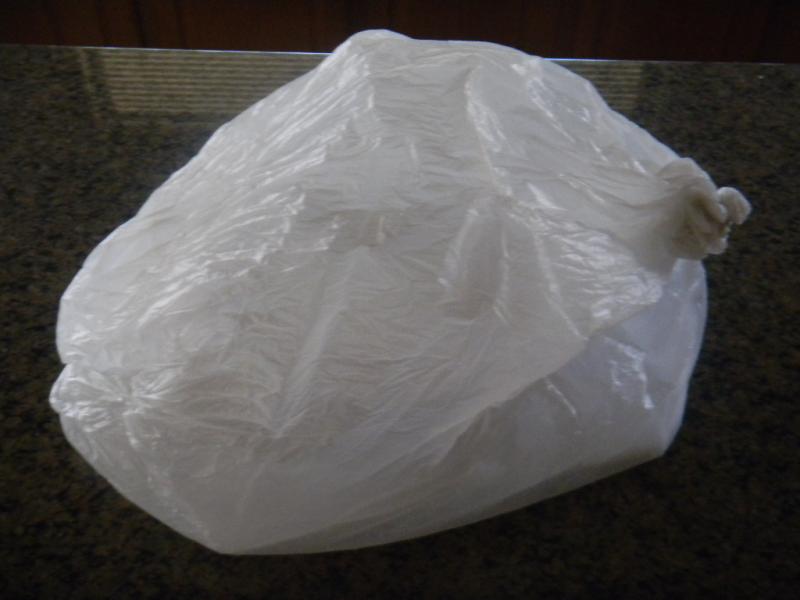
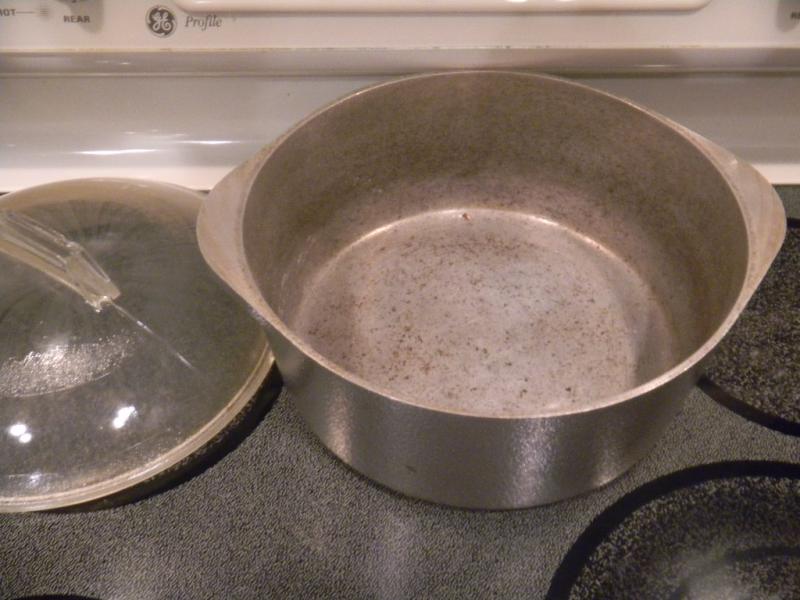
Our bake isn’t like Michael’s in many important ways that I personally find attractive and worth talking about even though my apprentice says I am just lazy to do it right like Michael does. First off, we used home ground whole Kamut and it is way more thirsty than white spelt so the 100% hydration problems are thankfully reduced a great deal. We used a YW and kamut SD starter instead of commercial yeast since we don’t have any and built this combo levain over (2) 4 hour and (1) 2 hour builds.
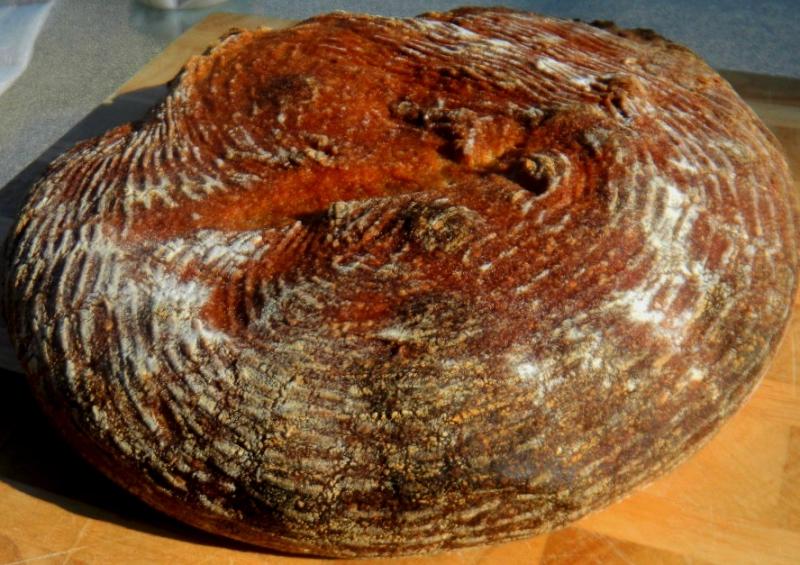
We also are never going to hand knead anything for 40 minutes unless it is large gold bars that are too heavy to pick up but safely stored in my bank vault – and only if they might need some light dusting and quick shine.
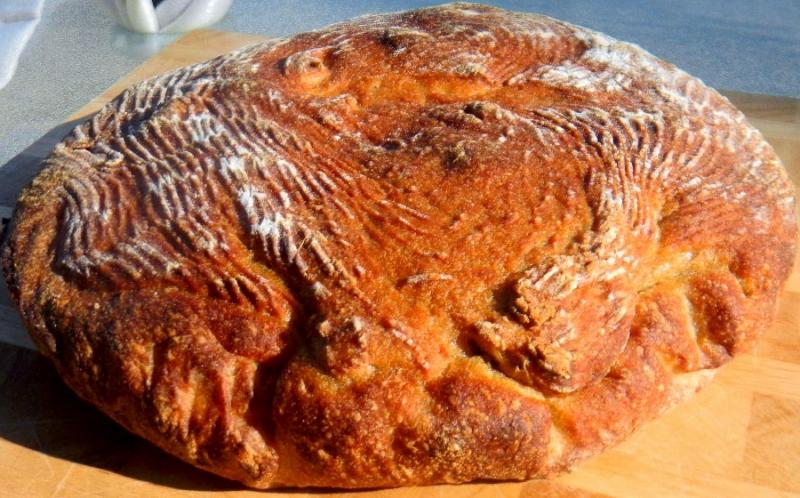
'Oh Mon Dieu Pain Rustique' is the new name for this bread :-)
We also added a little VWG, white and red diastatic and non-diastatic malts and a little honey - not much of any of them though. We also added our take of some of txfarmer’s 36 hour method; starting with a 10 hour retard after the kamut levain build was completed.
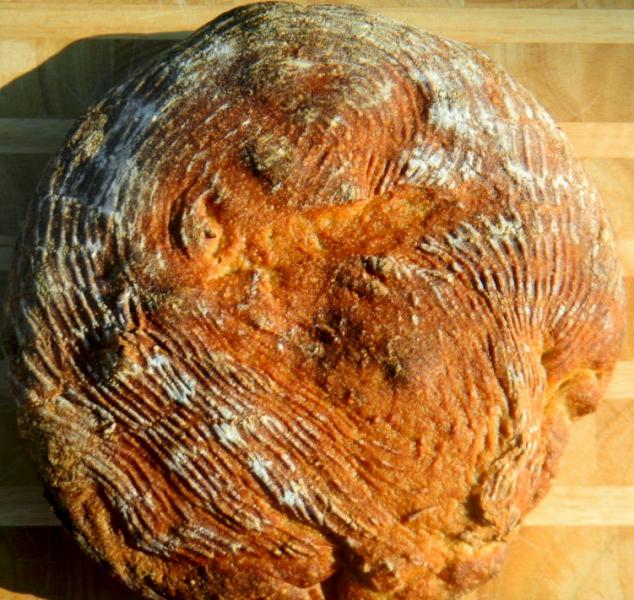

We incorporated the water flour, malts and honey with the dough flour and autolysed it for 10 hours in the fridge too. Both were taken out of the fridge and allowed to come to room temperature the next day for 2 hours making a total of 12 hours total before mixing them together in the KA.
Rather than hand kneading we mixed the dough in the KA on speed 2 for 8 minutes and on speed 3 for 2 minutes before resting it in a plastic covered oiled bowl for 20 minutes. It passed the window pane test but we were not done with it.
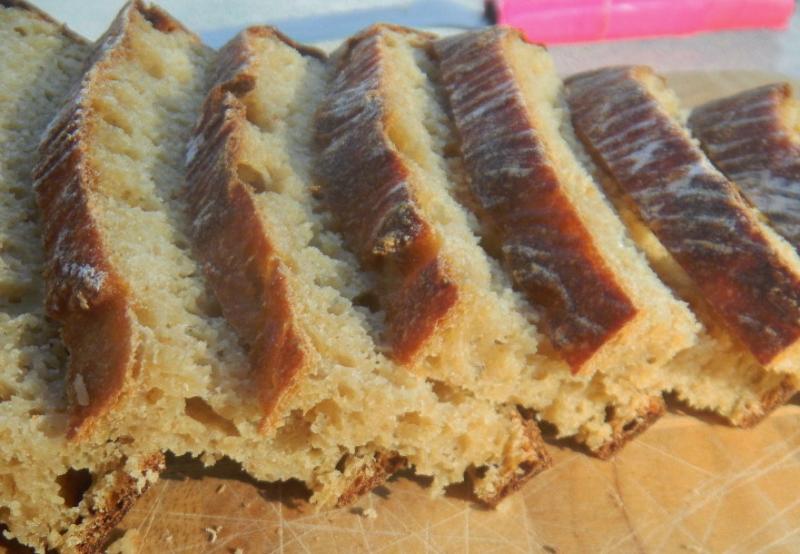
We then performed 4 sets of S&F’s at 10 minutes each – about 25 stretches with ¼ turns of the dough the first time going down 5 stretches each set there after. The last turn was 10 stretches with quarter turns making a total of 70 for all 4 sets.
After all of that it had some structure we thought might work out. It formed a very smooth and elastic dough, if still a little wet that was about as pleasing a dough ball can get without pinching it hard and seeing if it squeals.
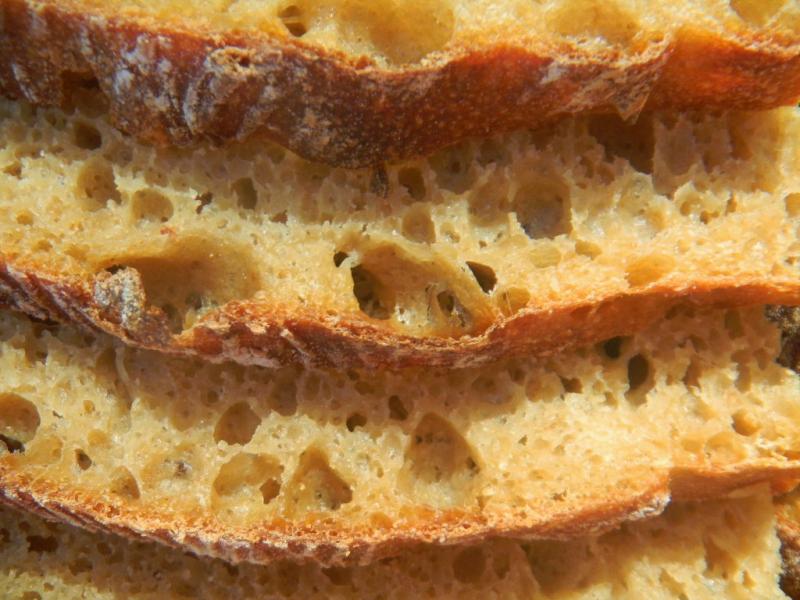
The dough was then allowed to ferment undisturbed for 60 minutes before going into a well rice floured oval basket, placed inside a tall kitchen trash bag and put in the fridge for its 12 hour proofing retard - but it was ready to go in 5 hours. Kamut can be tricky going from under proofed to collapse in short order if not watched. We originally wanted to bake this in the mini under the bottom of the DO used as a cloche but decided that the dough needed some structure so we opted for Big Betsy GE and baking inside a hot DO.
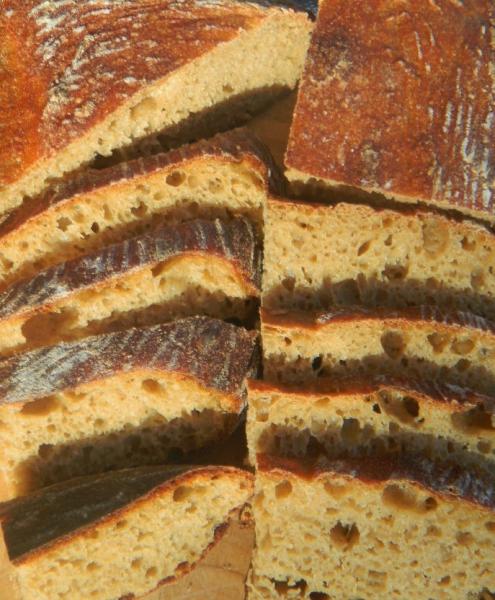
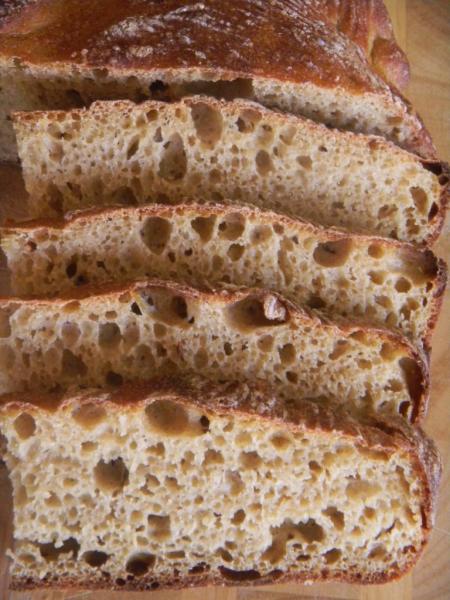
After the oven was pre heated to 500 F and the stone brought up to temperature on the bottom rack (about 40 minutes total) and the aluminum w/glass lid DO preheated with them, the dough was retrieved from the fridge. The dough was overturned from the basket into a now parchment lined hot DO.

This dough is very fragile and the least little thing will damage it. In this case it wasn’t a little thing - it stuck to the basket. After un-sticking and mangling it terribly, it was slashed, covered and placed into the oven on the 2nd rack level where it baked at 450 F with the lid on for 20 minutes.
Then the lid was removed and the bread was baked for another 5 minutes at 425 F convection this time before being removed from the DO and placed directly on the stone (removing the 2nd level rack) to finish baking. The bread was rotated 90 degrees every 5 minutes until the internal temperature reached 205 F - another 15 minutes. We didn’t catch ours in time and it read 210 F so another 10 minutes and 30 minutes total would be better.
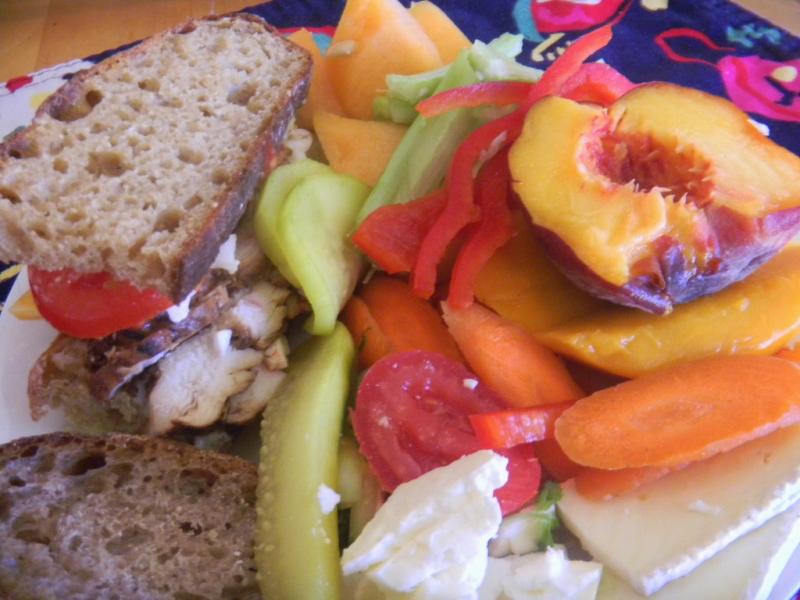
A very nice lunch with 2 kinds of pickes, Creole grilled chicken sandwich, fetta and brie cheese, carrot coins, celery and red pepper sticks, small salad with tomato, cantaloupe cubes and a half each peach and mango. Look at the beautiful yellow color, like semolina, of the kamut compared to the 25% multi grain SD bread next to it for comparison.
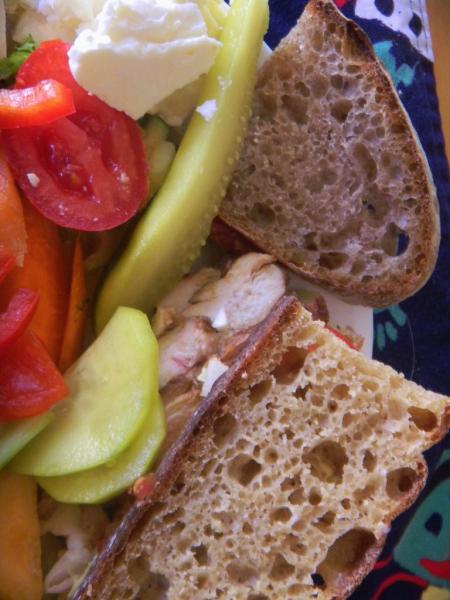
The flat bread was allowed to rest on the stone, oven off and door ajar for 10 minutes before being removes to a cooling rack.
It baked up beautifully brown and crunchy on the outside as DO’s are wont to do, going chewy as it cooled. But the loaf was badly mangled and it spread rather than sprang as a result. The inside crumb structure was partially destroyed having deflated 50% without recovery but it was still surprisingly open for 100% whole grain bread. This is the hallmark YW makes on whole grain bread crumb structure.
The crumb was a beautiful yellow like semolina, soft, moist even though slightly over baked and had a slight SD tang that was muted. The YW combo starter making up half the levain cuts the SD tang a like amount.
This bread doesn’t taste like rye, or whole wheat or even spelt for that matter – which would probably be the closest in taste. It has an earthy base and a grassy note. We love this bread toasted with just butter to cover.
Kamut is a new and welcome addition to the grain standard bearers we have used in the past. A tasty loaf of bread for sure even when it sticks to the basket like this one did to disfigure itself beyond recognition.
We are guessing that this high hydration bread needs to be baked in a loaf pan to get the most out of the open crumb that is possible or baked as a flat bread or ciabatta – as Mini Oven found out 3 years ago. The formula brings up the rear as usual.
100% Hydration and 100% Whole Kamut Tartine Boule | | | | | |
| | | | | |
Mixed Starter | Build 1 | Build 2 | Build 3 | Total | % |
Spelt SD Starter | 10 | 10 | 0 | 20 | 4.83% |
Yeast Water | 20 | 20 | 0 | 40 | 13.16% |
Kamut | 40 | 50 | 10 | 100 | 32.89% |
Water | 20 | 30 | 10 | 60 | 19.74% |
Total Starter | 90 | 110 | 20 | 220 | 72.37% |
| | | | | |
| | | | | |
Starter | | | | | |
Hydration | 100.00% | | | | |
Levain % of Total | 25.61% | | | | |
| | | | | |
Dough Flour | | % | | | |
Non - Diastatic Red Malt | 2 | 0.66% | | | |
Kamut | 300 | 98.68% | | | |
Diastatic White Malt | 2 | 0.66% | | | |
Dough Flour Total | 304 | 100.00% | | | |
| | | | | |
Salt | 6 | 1.97% | | | |
Water | 310 | 101.97% | | | |
Dough Hydration | 101.97% | | | | |
| | | | | |
Total Flour | 414 | | | | |
Water | 420 | | | | |
T. Dough Hydration | 101.45% | | | | |
Whole Grain % | 100.00% | | | | |
| | | | | |
Hydration w/ Honey | 100.12% | | | | |
Total Weight | 859 | | | | |
| | | | | |
Honey | 9 | 2.96% | | | |
VW Gluten | 10 | 3.29% | | | |
Total | 19 | 6.25% | | | |




